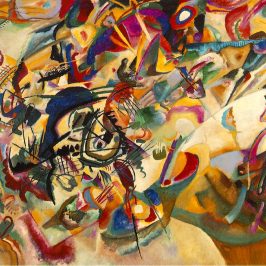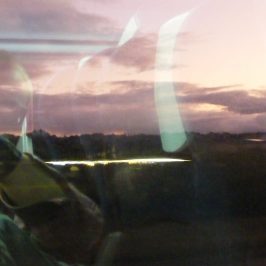Regulars to this blog will be aware of the work and writing of Tony Dias who has been a conversation partner and fellow explorer of many of the ideas that have appeared on Remembering throughout the last years (if you are not familiar with Tony’s blog, here you go: Horizons of Significance). Last year we co-published three of these conversations which delved into some of the processes that underpin the sense of isolation and fragmentation we had both experienced (albeit in different ways) as well as the ways in which we were beginning to find community. As a way into approaching and practicing dialogue and proprioception my interactions with Tony have been, and continue to be, immensely helpful for finding new inspiration/insight and for clarifying my own thought process.
Recently, Tony has been distilling a lot of the insights he has come to in an encouraging series of blog posts which both deepen his conceptual vocabulary and anchors it firmly within a wider community. In A Space for Community, he opens up for ‘anchoring’ community within the wider movement of life. This connects directly with some thoughts I’d been having about community as relationship (see Lines of flight in a time of endings) and suggests to me a way to begin gauging whether thought and action align with a deeper sense of community. This feels like a major step forward.
I had a chance to catch up with Tony back in October before I disappeared into the deep Brandenburg countryside where the internet connection was close to non-existent and I nearly went nuts writing the second chapter of my thesis (which is thankfully there now with my sanity more or less intact). In that time, Tony seems to have entered a creative and productive period, writing a series of essays which warrant signposting here. If this is your first encounter, let me briefly introduce Tony and his writing before pointing to his recent essays, which feel like a significant move towards a way of life which both acknowledges and moves beyond our time as one of deep fractures within/between humanity and the wider community of life.
As an artist, designer and writer Tony brings a deep understanding of perception and creativity to his work which examines questions of meaning, story, craft, belief and communion. At the heart of his work is a concern with learning as a mutual and reciprocal process. Drawing on the dialogues of David Bohm and Krishnamurti, he is attentive to the (in)coherence of thought and approaches conversation as a chance to reflect on the deeper assumptions behind thought. Tony’s writing is at once puzzling, heartening and demanding: it can’t be glanced through but requires the same sort of attention he brings into his writing. As he writes about his writing process in one of the recent essays:
“Beyond whatever habits of action, quirks of an individual history and make-up, there is a drive to present the form insight partakes of. It is a way of writing/reading/thinking that resists the temptation to develop momentum. All the stops and starts. The turns. The essays into carving distinctions where we expect to find the obvious. These are ways to counter momentum and allow what is there to be found. To allow what arises from the tacit underpinnings of life space, room to show itself.”
I’d recommend taking a couple of hours to sit with some of his recent essays. Here are a few arbitrary links and teasers. Enjoy. (You can find out more about Tony’s work at http://antonio-dias.com/).
Those in power, visibly or secretly, are trapped within their religious views. Their actions bring on certain consequences because of the holes in their view of what-is.
…meaning cannot maintain contact with our greater reality without taking an approach to divinity into awareness.
…what if we recognize that the space we crave is a space we can only find in community?
That the only clear space for community lies within the Theosphere.
…how we may navigate any form of uncertainty. That “failure,” instead of being the “bad” pole of a binary condition, is just a phase in a flow of cause and effect that cannot be untangled to produce a single judgement. That clarity, how we may approach coherence, appears at the moment we perceive the incoherence of our knowledge of a situation. Failure, in this light, is its self a powerful catalyst.
The fundamental nature of coherence is that everything holds together. Incoherence is the result of violence destroying this bond. Fragmentation is both the cause and result of incoherence.
Proprioception. The ability to recognize that an action is a result of an intention. Physical proprioception maintains the coherence of our movements in space as the result of our intentions to move. When these are broken we enter a realm of incoherence.
As we approach clarity via the lessons of our failures we are nearer to finding coherent responses. As the vicious resilience of an incoherent culture breaks down we find more and more possibility for action.
Coherent Action, from unintended consequences to catalytic response.
Clarity is illuminating, but it can be easily obscured. Unless we are clear about the effects of Ego-driven Will – The way our habitual conditioning rejects anything that shakes our conviction that its fictions are true. – we will confront clarity as a momentary confusion. Something to be rushed past. It makes us uncomfortable and that must not be allowed to continue.
The first glimmer we get of how we are held in this trap of Ego is alarming. The second…, the third…. Eventually, unless we accept the organic death of our vitality required to maintain Ego’s hold on us, we find ways to begin to get through it.
As soon as we do, we are rewarded by a new access to Joy. This is a surprise! Ego always insisting that it was protecting us from disillusion and nihilism. When what it was doing was keeping us deluded and sending us deeper into despair.
Moving without momentum means that we can adapt to a situation at the finest grain of our perception. There is no lag. We continually adjust within a view of time that is not broken into ways and means, actions and results. Each moment unfolds and flows into the next. As our attention gains its own form of strength we can perceive how each moment is not discreet, but part of an infinitely subtle flow. As our attention becomes accustomed to this view, we find that our adjustments cannot be separated from what “triggered” them or what they “cause.”
We discover that what we had considered our all-important Will has nothing to do with it. That our best comes when we partake of the flow and connect with what is tacit. What underlies every moment and is interwoven in how what is implicit comes into being.
To be strong requires patience. Patience gives us a capacity to let-go of striving. To find joy in being. Wherever we are. The strength to be subtle.
In this we arrive at a fundamental level of coherence.
Whenever we are violent there is an aspect of this insistence on certainty at work.
Certainty is incoherent. It does not persist in nature. The desire for certainty is then the desire to perpetuate an illusion.
Rationalism assumes that there are abstract ideals – originals – of whatever we encounter through perception, existing “out there.” By approaching these ideals while stripping our flawed perceptions of any particularities that do not conform to our ideals Reason asserts that we will arrive at certainty. Perception is confused. Idealization provides certainty. The ambit of our existence is narrowed down to just this one dimension, a gradient from confusion to certainty that can only be climbed by dint of repressing anything outside “The Plan.”
Coherence shows us that certainty cannot be arrived at through idealization. Positing ideals, the basis of the rationalist strategy, does nothing to eliminate the potential for illusion. It increases this potential for illusion. It guarantees delusion by stripping perception of its particularity and therefore removing the lived experience from life, replacing it with an enforced projection of an ideal that only exists in thought.
Suffering is a tragedy because it is avoidable and we treat it as if it were not.
Approaching coherence ends suffering.
Aligning action with coherence removes the constraints we force onto what is possible.






Feminism and the dualism disease
I’d like to know if someone out there has done a qualitative comparison of attitudes...